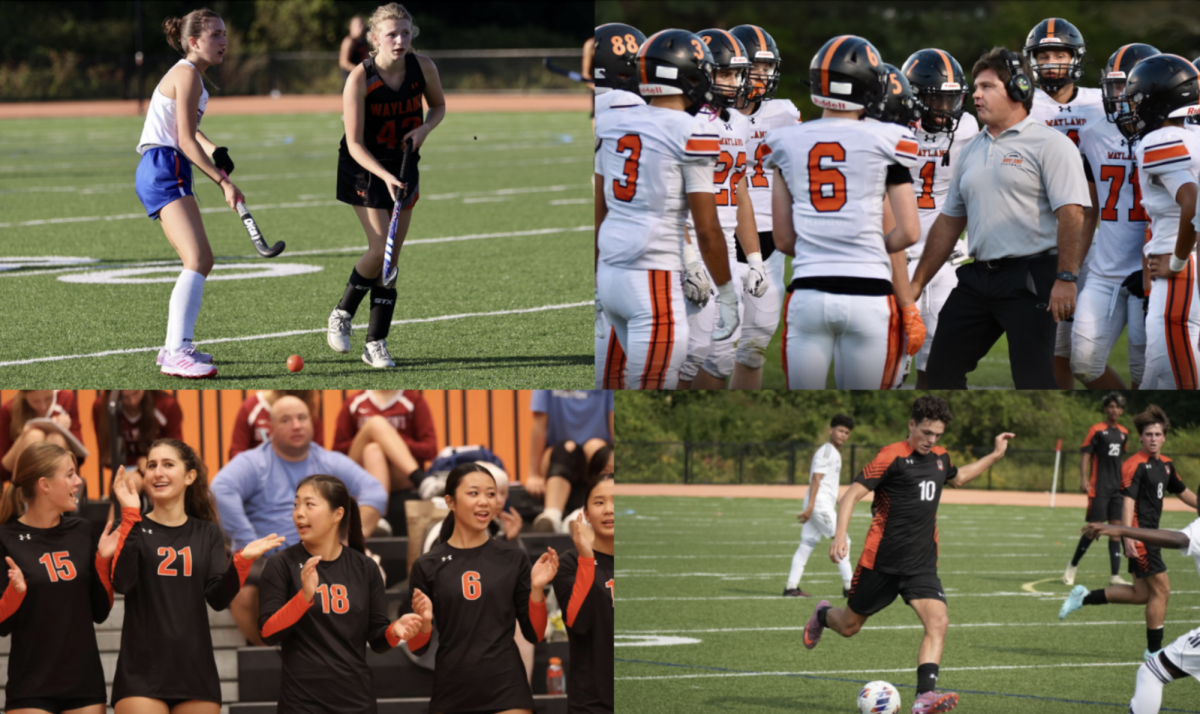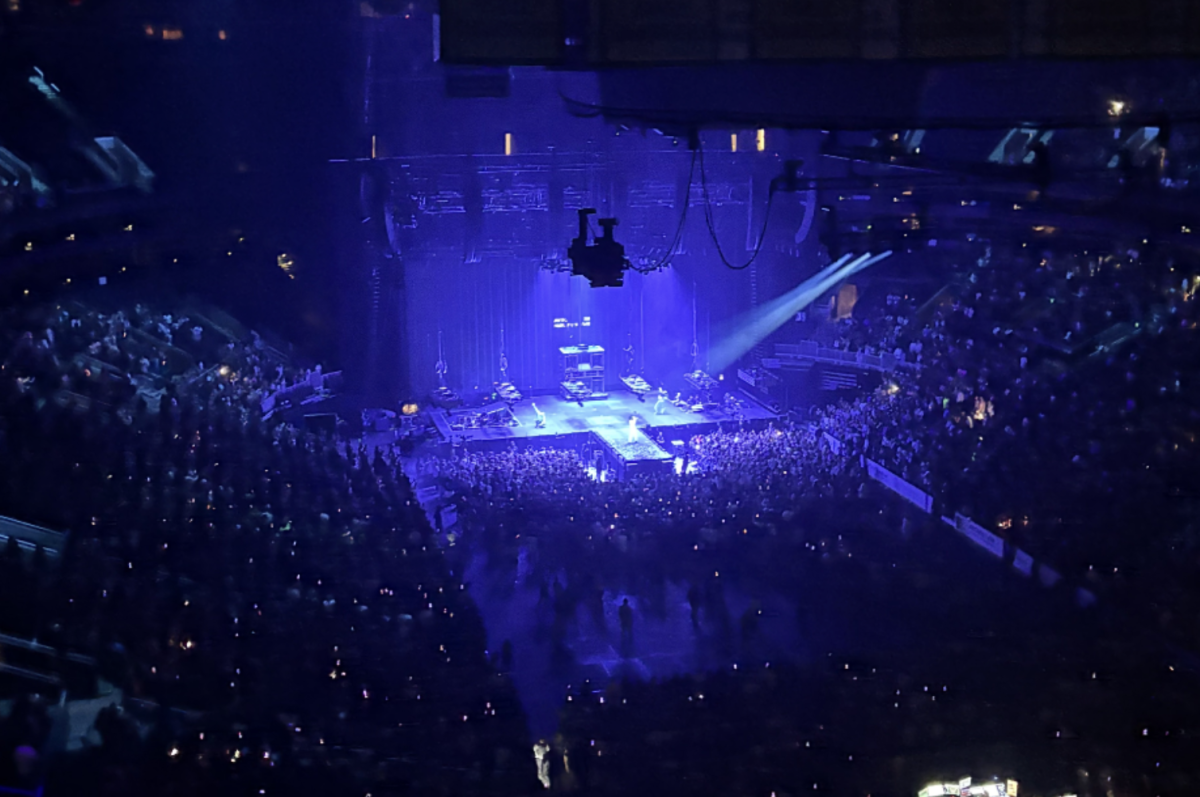Madeeha Syeda: Your mindset will change over time, even if you don’t think you can do it
Credit: Courtesy of Madeeha Syeda
Freshman Madeeha Syeda (back row, second from right) poses with her karate class, holding her trophy after coming first place in a tournament in 2016. Syeda began karate when she was 7 years old and practiced the martial art for five years before she began mixed martial arts. “[MMA] gives me one thing that I feel good at,” Syeda said. “It’s something that I can feel proud of myself about.”
March 27, 2019
For freshman Madeeha Syeda, mixed martial arts is not only a sport that she is passionate about but also a source of great confidence. For the past eight years, training in martial arts has transformed her life.
When she lived in India, Syeda’s parents introduced her to karate. After moving to the United States in 2017 with five years of experience in karate and a brown belt, Syeda was unable to find a karate school near her. Determined to continue in martial arts, Syeda began participating in MMA, wishing to study self-defense.
“[MMA] covers a lot of things because it’s mixed martial arts,” Syeda said. “There’s boxing, there’s jujitsu in it, there’s judo, but there’s just so many [types of martial arts] in it that I learn so much more than if I perfected myself in just one martial art. Now, I’m doing so many and it’s really interesting to see how all of them work together.”
MMA has three main aspects: striking (similar to boxing), grappling (similar to wrestling) and takedowns. Syeda’s class, which meets five days a week, rotates training on one of those three skills, as well as alternating between workouts focusing on arm, leg and core strength. According to Syeda, after learning a new submission or combination, class ends with students practicing live drills and everyone in a sweat.
“[MMA is] a really good place to throw my aggression and energy out,” Syeda said. “And also, for me, it helps a lot with hard work. It shows that everything requires a lot of hard work, dedication and effort.”
Despite having earned the penultimate belt in karate, Syeda had to start over with a white belt in MMA. But within a year of training, she got a double promotion, moving from white to purple belt, the order of belts being white, yellow, orange, purple, blue, advanced blue, green, advanced green, brown, advanced brown and then black. Although Syeda now has a blue belt, it will take many more years to reach the belt she used to have in karate.
“It doesn’t matter how slowly you move up, but if you keep showing up to class and you don’t quit, you’ll get there eventually,” Syeda said. “Maybe it will take you twenty years instead of ten years, but you’ll get there.”
Beyond a physical workout, MMA has changed Syeda’s mentality and outlook on life. During one of her first MMA classes, Syeda doubted her ability to perform. But after persisting and continuing with the martial art, it transformed her mindset on perseverance.
“Anything you do, [if] you do it so many times, or just once, and you don’t get it, don’t look down on yourself,” Syeda said. “Because eventually, you’re going to get it. Just because you don’t get it once or you don’t get it 17 times doesn’t mean you’ll never get it. You just have to learn from that and work harder.”
Along with changing Syeda’s perspective of persistence and confidence, MMA has taught her about rule over the body and emotions.
“[MMA] teaches you control,” Syeda said. “When you’re doing something with a partner, you don’t go on because you need to remember that they’re not your opponent, but they’re your partner. What people assume is that when you do martial arts, you are a violent, raging person. That’s how I’ve seen it. But it teaches you to be calm and in control of yourself and your surroundings.”
When practicing techniques and combinations, students train in partnerships, which is why Syeda describes training as a team effort, with students needing a partner to perfect grapplings and submissions. Within each pair, individuals rely on the other to keep practice competitive and intense. And that intensity comes from the overall energy of the class.
“Martial arts is an individual activity, but you work as a group,” Syeda said. “If there are few students in the class, there’s not enough energy for the class. If there are more people, there’s so much more energy in the room and everyone is at a different level of intensity. [Competitiveness] depends on your partner. If your partner can bring the same intensity as you, it’s so fun.”
Having done MMA for a year and a half, Syeda has begun teaching a six to ten-year-old class at her school. Syeda has enjoyed being a role model and having an impact on the students, wanting to contribute to their growing mindsets and experiences in life. She has also found teaching has helped her hold herself to higher standards, knowing that others are looking up to her.
“When I see other people do [a technique] when I’m teaching and they do it right in front of me, I see so many things that I wouldn’t notice while I was in class,” Syeda said. “I see something and I correct them on it. And I think to myself, ‘Do I do that too?’ I make a little mental note in that way. Teaching, honestly, is the best way of learning.”
Syeda has also enjoyed being a coach because with the lack of female martial artists portrayed in the media, she hopes to bring more representation of girls to martial arts.
“I really wanted more female instructors and female role models for the girls in the school, because they look up to us,” Syeda said. “And I really wanted to be that person for them.”
With seven and a half years of martial arts experience, Syeda aspires to continue her MMA career throughout and beyond high school.
“[MMA] gives me one thing that I feel good at,” Syeda said. “This is something I feel passionate about and good about. I’m actually good at it. I can feel proud of myself.”


























![Freshman Madeeha Syeda (back row, second from right) poses with her karate class, holding her trophy after coming first place in a tournament in 2016. Syeda began karate when she was 7 years old and practiced the martial art for five years before she began mixed martial arts. “[MMA] gives me one thing that I feel good at,” Syeda said. “It's something that I can feel proud of myself about.”](https://waylandstudentpress.com/wp-content/uploads/2019/03/Madeeha-Syeda-e1553834694838.jpg)
